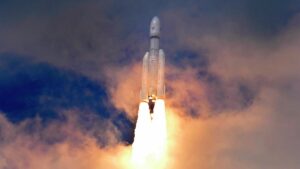ISRO and JAXA are teaming up for a lunar mission called LUPEX or Chandrayaan-4.
 India, following the successful Chandrayaan-3 mission, is gearing up for its next lunar venture. In a joint effort, ISRO and the Japanese space agency JAXA are collaborating on the Lunar Polar Exploration Mission, commonly referred to as the Chandrayaan-4 mission.
India, following the successful Chandrayaan-3 mission, is gearing up for its next lunar venture. In a joint effort, ISRO and the Japanese space agency JAXA are collaborating on the Lunar Polar Exploration Mission, commonly referred to as the Chandrayaan-4 mission.
This collaborative moon exploration initiative marks the next step in India-Japan space exploration cooperation. Explore further to get insights into the details of this upcoming lunar mission and the collaborative efforts between ISRO and JAXA.
LUPEX or Chandrayaan-4 mission
Chandrayaan-4 is currently in the planning phase, with ISRO and JAXA joining forces for the Lunar Polar Exploration Mission (LUPEX). The mission’s main objective, according to JAXA, is to collect data on the quantity and forms of water on the lunar surface. Chandrayaan-4 aims not only to identify water but also to study its quantity, distribution above and below the lunar surface, and its different forms, including its interaction with dry regolith particles. Additionally, JAXA seeks to understand how lunar surface water has evolved over time, providing valuable insights into the Moon’s evolution.
Read Also:- Guarding Users: How Google Maps Fends Off Fake Content
Recent information from ISRO suggests that Chandrayaan-4 could operate on the lunar surface for an impressive 100 days, significantly longer than Chandrayaan-3. The mission, with a payload mass exceeding 350, including a rover, surpasses the Chandrayaan-3 mission’s 26 kg rover, ‘Pragyan.’ The H3 rocket will serve as the launch vehicle for this mission.
Preceding the launch, specific investigation areas and observation points on the lunar surface will be chosen based on unique environmental and geological conditions. The lander is set to touch down in an area with prolonged sunlight hours, facilitating an extended deployment period for the rover.
Chandrayaan-4’s mission includes exploring permanently shadowed areas at the lunar south pole, where the presence of ice and minerals is anticipated. This collaboration between ISRO and JAXA not only advances lunar exploration but also provides scientists with opportunities to experiment with various technologies and share ideas, enhancing the prospects of Chandrayaan-4’s success.
